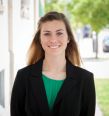
Although many regions have seen their fair share of rain and pasture growth this season, it is never too early to start planning ahead to combat the summer slump.
If your operation is in the northern one-third of the United States, chances are you see this issue every year. The cool-season perennial forages that thrive early and late in the growing season offer discouraging growth mid- to late summer.
Jessica Williamson, extension forage specialist at Penn State, recommends maintaining a high residue height in such pastures from June through early fall. She explains that by keeping a residue height of 4 inches, forages are able to bounce back easier due to their additional carbohydrate stores.
“What is above the soil is also reflected below the ground,” says Williamson. “In other words, the higher the stubble height, the deeper the roots, allowing the forages to scavenge for nutrients and water, possibly reducing the water stress that could occur during the summer months when rainfall is scarce.”
Planting warm-season annuals is also a viable option. Williamson suggests the use of sudangrass, sorghum x sudangrass, pearl millet, or additional legumes to keep animals off of heat-stressed cool-season pastures. These species are typically high yielding but should be strip-grazed with a back fence to allow for regrowth. Williamson also notes that it is important to keep an eye on grazing livestock for nitrate poisoning in dry weather.
Although still being researched, overseeding warm-season annuals into cool-season perennial pastures is yet another option if given careful consideration. Establishment involves the use of a low rate of herbicide or grazing pastures down to 1 inch, followed by drilling warm-season annual seed into existing pastures.
“Commonly, warm-season forages have a lower nutritive value than their cool-season counterparts,” Williamson concludes, adding that producers may want to think about supplementation to ensure that the animals are reaching their nutritional needs.

Lauren Peterson is serving as the 2017 Hay & Forage Grower summer editorial intern. She is from Wyanet, Ill., and currently attends Kansas State University where she is pursuing a degree in agricultural communications and journalism. While at school, Lauren works at the KSU dairy farm and is an active member of the Horseman’s Association.

